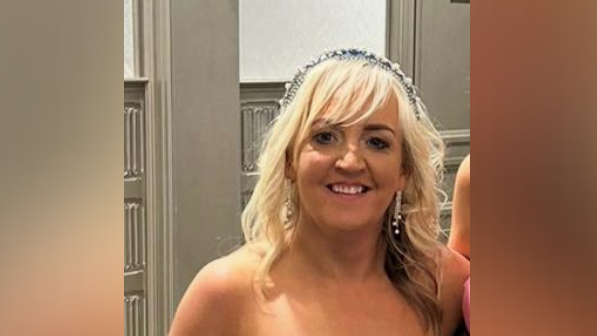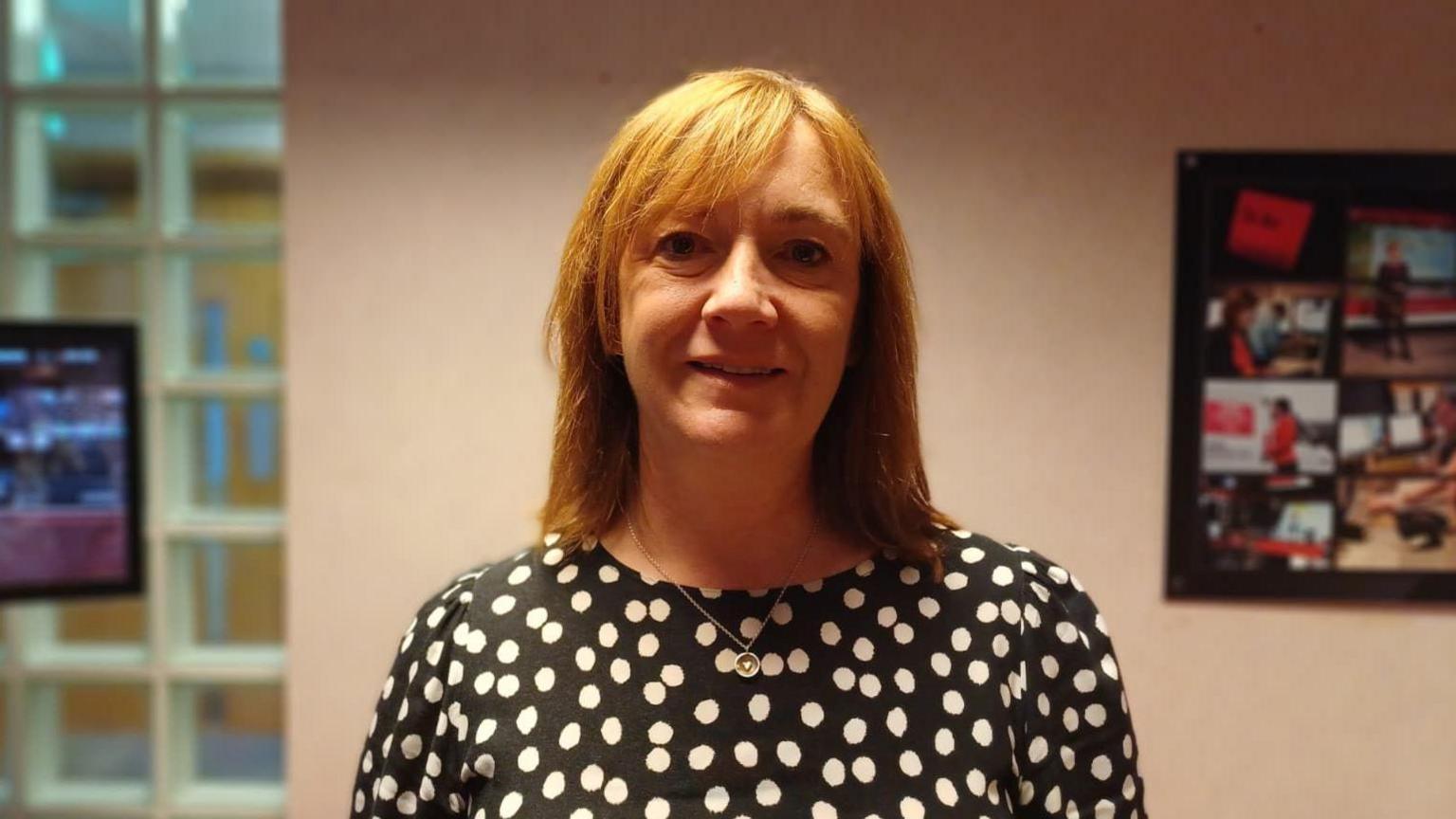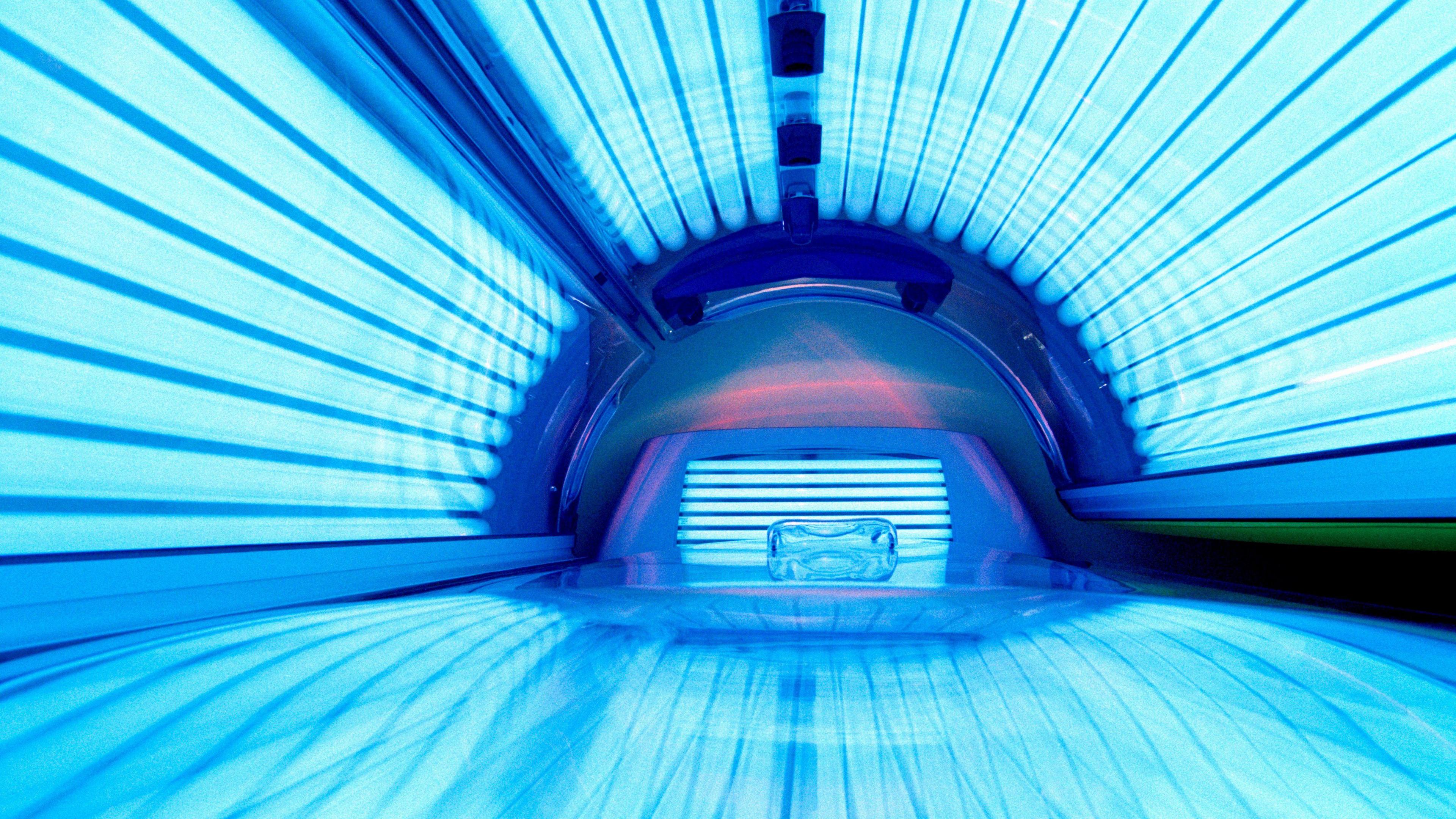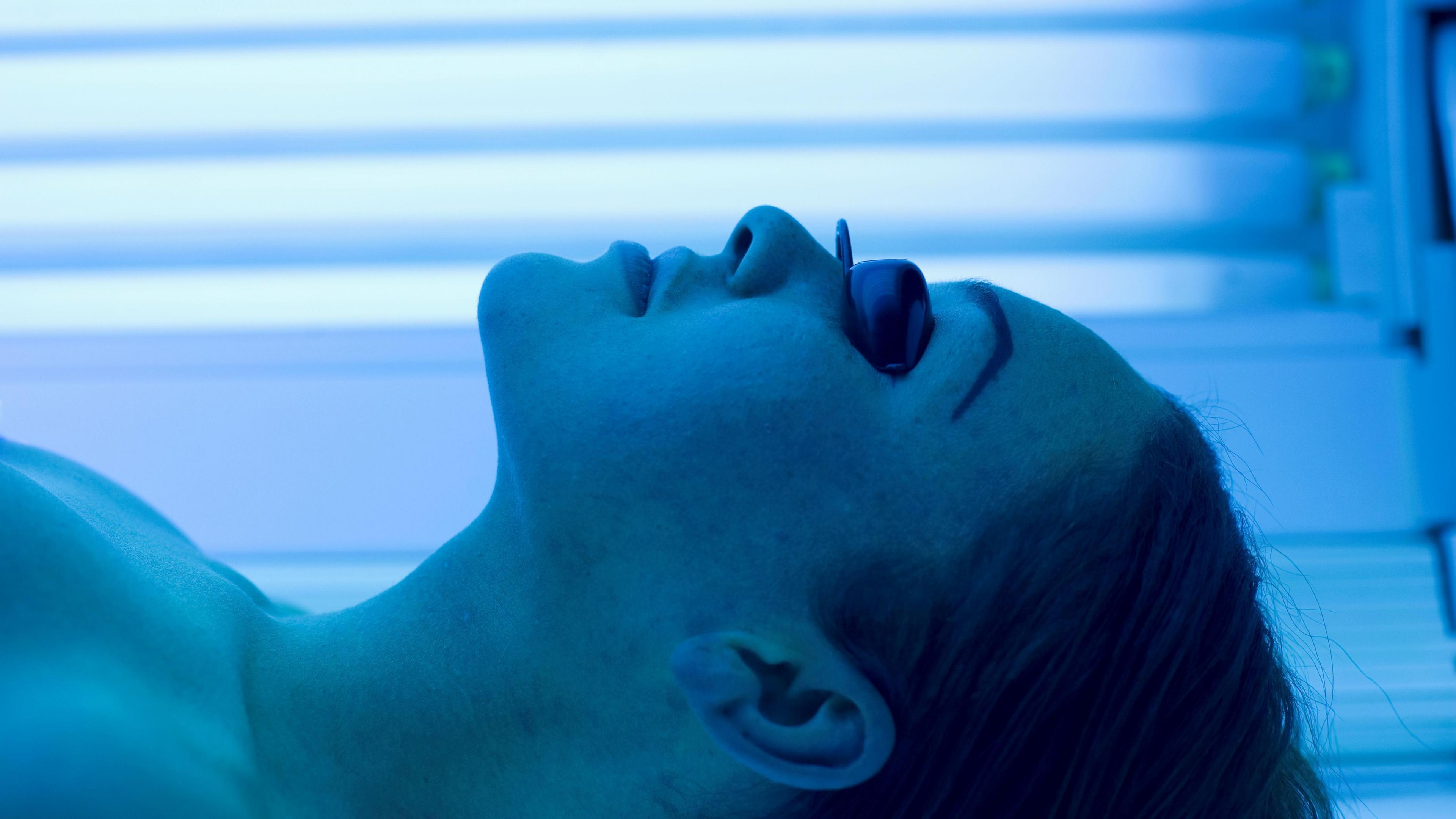'I used sunbeds weekly and didn't think I would get skin cancer'

Michele Slane was diagnosed with malignant melanoma in 2010 after using sunbeds since she was 17
- Published
There have been calls for the legislation in Northern Ireland around sunbed use to be "tightened".
The Sunbeds Act 2011, external, which came into effect on May 2012, bans people under the age of 18 from using, hiring or buying sunbeds in Northern Ireland.
Michele Slane started using sunbeds when she was 17 and was later diagnosed with malignant melanoma in 2010. The west Belfast woman took sunbed sessions once a week and said that she didn't think she "used them that much".
Ms Slane said she thought it would "never happen to me".
Factors that increase the chances of getting melanoma include age, having pale skin, a large number of moles and a family history of skin cancer.
But the main cause is exposure to UV rays, which comes from the sun and is also used in sunbeds.
Speaking on BBC Good Morning Ulster, Ms Slane said she has noticed more young men using sunbeds.
"It's the young boys and to me young boys aren't gong to be aware of changes if they have moles," she said.
"It's frightening, because these kids are never going to know.
"What's going to happen to these boys?
"These kids need to be well aware of what the consequences could be."
'Very concerning'

Trudy Stanfield, from Belfast City Council, says she believes the legislation could be toughened up
Before 2012, the indoor tanning industry didn't have specific statutory regulation in Northern Ireland.
However, under health and safety at work legislation, external, employers or self-employed people did have a duty to assess any risks to people who may be affected by their work or business.
Also, the Sunbed Association (TSA), provides a code of practice to its members.
At the time of Michele Slane's diagnosis in 2010, these had restricted sunbed use to those aged over 16 (or whatever age was legally required in the jurisdiction). The TSA now prohibits sunbed use by anyone under 18 years.
Trudy Stanfield is a senior environmental health officer at Belfast City Council.
She said councils in Northern Ireland have a programme where they visit sunbed salons and carry out test purchases using under-18s and if a sale is made, the business receives a fixed penalty notice and has to pay £250.
"It's quite a big deterrent on a small business," she said, but added, "some businesses have been fined in more than one occasion".
'Reading their phones' on sunbed
The Sunbed Act 2011 requires salons to provide customers with an information leaflet that lists the risks and they need to display a warning notice in the shop, as well as provide eye protection.
"Some salons are continuing to sell to under-18s," Ms Stanfield said.
She said since the legislation came into play councils across Northern Ireland have carried out test purchases using under-18s to try and buy a sunbed session.
"Since that time, we've carried out approximately a thousand test purchase exercises and, of that, there have been 126 sales to under-18s where a fixed penalty notice has been issued on the business."
"A lot of salons are also not providing eye protection on occasions. They're also not providing the information they should be.
"I do feel the legislation could be toughened up.
"A lot of young people are still reading their phones and using their phone while using the sunbed which is very concerning.
"Young boys are becoming more interested in sunbeds, particularly sports people."
What has the DoH said?
In their Sunbeds Policy, external, the Department of Health (DoH) say that it is estimated that in the UK about 100 people die each year from melanomas that are due to sunbed use and that would equate to two to three deaths per year in Northern Ireland.
In a statement, they said: "Northern Ireland's Skin Cancer Prevention Strategy and Action Plan aims to reduce the incidence of, and deaths from, skin cancer.
"The strategy's objectives include increasing public awareness regarding the dangers of overexposure to UV radiation from sunlight and from artificial tanning devices and to reduce overall use of artificial tanning devices," it added.
"In addition, the Sunbed (Northern Ireland) Act 2011 prohibits an operator of sunbed premises from allowing a person under 18 to use a sunbed on those premises and this is enforced by council environmental health officers.
"The department continues to work with partner organisations, including the Public Health Agency, district councils and Cancer Focus NI, to help reduce sunbed use and raise awareness of the harms they cause."

Ms Slane says the legislation should be "tightened" and that the fines are "nothing" to some salons
Issuing a fine is "nothing" to many salons, according to Ms Slane, because "I know the footfall they have, so I definitely don't think that's a deterrent".
She used to work at the haematology department at the Belfast Trust and remembers seeing pictures of cancer but was still "very taken aback" when she got a positive diagnosis.
"To think that it did happen and you had been advised all those years ago and you didn't take no heed, it was really, really shocking," she said.
What is skin cancer?

In Northern Ireland, under-18s are not allowed to use sunbeds
The Public Health Agency (PHA) has said external skin cancer makes up more than 30% of all cancers detected in Northern Ireland and is usually caused by exposure to UV rays.
It can be divided into two types: melanoma and non-melanoma skin cancers.
Melanoma is a type that can spread to other areas of the body. The most common sign is the appearance of a new mole or a change in an existing mole.
This can happen anywhere on the body, but the back, legs, arms, and face are most commonly affected.
In most cases, melanomas have an irregular shape and more than one colour.
They may also be larger than normal moles and can sometimes be itchy or bleed.
What are the symptoms of melanoma?

One of the main causes of melanoma is exposure to UV rays, which comes from the sun and is used in sunbeds
The most common symptom is the appearance of a new mole, or a change in an existing one.
This could be a change in colour, shape or size, or if the mole has become painful or itchy.
The NHS also advises people to see their GP if they find a new or unusual mark on your skin that has not gone away after a few weeks.
The ABC of checking a mole
Asymmetry: Two halves differ in shape
Border: Edges irregular or jagged
Colour: Uneven/patchy; shades of black, white, grey, brown or pink; two or more colours = suspicious
Diameter: For most melanomas, at least 6mm
Evolving: Changing in size, shape or colour
Funny: If it looks odd, or you aren't happy about it for any reason get it checked
This article was amended on 4 September 2025.
Related topics
- Published14 June 2024

- Published28 May 2023
